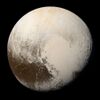Astronomy:(445473) 2010 VZ98
| Discovery[1] | |
|---|---|
| Discovered by | D. L. Rabinowitz M. E. Schwamb S. Tourtellotte |
| Discovery site | La Silla Obs. |
| Discovery date | 11 November 2010 |
| Designations | |
| (445473) 2010 VZ98 | |
| 2010 VZ98 | |
| Minor planet category | TNO[2] · SDO[3] |
| Orbital characteristics[2] | |
| Epoch 4 September 2017 (JD 2458000.5) | |
| Uncertainty parameter 2 | |
| Observation arc | 16.90 yr (6,171 days) |
| |{{{apsis}}}|helion}} | 266.63 AU |
| |{{{apsis}}}|helion}} | 34.333 AU |
| 150.48 AU | |
| Eccentricity | 0.7719 |
| Orbital period | 1846.03 yr (674,262 d) |
| Mean anomaly | 358.00° |
| Mean motion | 0° 0m 1.8s / day |
| Inclination | 4.5110° |
| Longitude of ascending node | 117.39° |
| |{{{apsis}}}|helion}} | ≈ 3 December 2027[4] |
| 313.88° | |
| Physical characteristics | |
| Mean diameter | 401.33 km (calculated)[5] 443 km (calculated)[3] 471 km (calculated)[6] |
| Rotation period | 9.72±0.05 h[5][7] |
| Geometric albedo | 0.07 (assumed)[6] 0.09 (assumed)[3] 0.10 (assumed)[5] |
| C[5] B–V = 1.100±0.040[8] V–R = 0.670±0.020[8] | |
| Absolute magnitude (H) | 4.81±0.04 (S)[7] · 5.0[1][2] 5.1[5] · 5.27[8] · 5.3[6] |
(445473) 2010 VZ98 (provisional designation 2010 VZ98) is a trans-Neptunian object of the scattered disc, orbiting the Sun in the outermost region of the Solar System. It has a diameter of approximately 400 kilometers.[5]
It was discovered on 11 November 2010, by American astronomers David Rabinowitz, Megan Schwamb and Suzanne Tourtellotte at ESO's La Silla Observatory site in northern Chile,[1] when it was 38 AU from the Sun.
Orbit and classification
2010 VZ98 orbits the Sun at a distance of 34.3–266.6 AU once every 1846 years (674,262 days; semi-major axis of 150.5 AU). Its orbit has a high eccentricity of 0.77 and an inclination of 5° with respect to the ecliptic.[2] Small number statistics suggest that this body may be trapped in a 3:2 orbital resonance with an unseen planet beyond Neptune with a semi-major axis of 195–215 AU.[9] The first precovery was taken by the Sloan Digital Sky Survey at the Apache Point Observatory in 1998, extending the body's observation arc by 12 years prior to its discovery. The precoveries were found in May 2015 (MPS 604632).[1]
Physical characteristics
A rotational lightcurve of 2010 VZ98 was obtained from photometric observation by members of the Carnegie Institution for Science at Las Campanas Observatory, Chile. The light-curve gave a rotation period of 9.72±0.05 hours with a brightness variation of 0.18 magnitude ({{{1}}}).[7]
Diameter and albedo
While American astronomer Michael E. Brown assumes a diameter of 471 kilometers and an albedo of 0.07,[6] the Johnston's Archive estimates a diameter of 443 kilometers with generic albedo of 0.09.[3] The Collaborative Asteroid Lightcurve Link assumes an albedo of 0.10 and calculates a diameter of 401 kilometers.[5] These estimates are based on an absolute magnitude between 5.0 and 5.3.[6][5]
Naming
As of 2018, this minor planet remains unnamed.[1]
See also
- List of Solar System objects by greatest aphelion
References
- ↑ 1.0 1.1 1.2 1.3 1.4 "445473 (2010 VZ98)". Minor Planet Center. https://www.minorplanetcenter.net/db_search/show_object?object_id=445473. Retrieved 7 September 2016.
- ↑ 2.0 2.1 2.2 2.3 "JPL Small-Body Database Browser: 445473 (2010 VZ98)". Jet Propulsion Laboratory. https://ssd.jpl.nasa.gov/sbdb.cgi?sstr=2445473. Retrieved 2 June 2017.
- ↑ 3.0 3.1 3.2 3.3 Johnston, Wm. Robert (30 December 2017). "List of Known Trans-Neptunian Objects". Johnston's Archive. http://www.johnstonsarchive.net/astro/tnoslist.html. Retrieved 9 February 2018.
- ↑ JPL Horizons Observer Location: @sun (Perihelion occurs when deldot changes from negative to positive. Uncertainty in time of perihelion is 3-sigma.)
- ↑ 5.0 5.1 5.2 5.3 5.4 5.5 5.6 5.7 "LCDB Data for (445473)". Asteroid Lightcurve Database (LCDB). http://www.minorplanet.info/PHP/generateOneAsteroidInfo.php?AstInfo=445473%7C. Retrieved 7 September 2016.
- ↑ 6.0 6.1 6.2 6.3 6.4 Michael E. Brown. "How many dwarf planets are there in the outer solar system?". California Institute of Technology. http://web.gps.caltech.edu/~mbrown/dps.html. Retrieved 9 February 2018.
- ↑ 7.0 7.1 7.2 Benecchi, Susan D.; Sheppard, Scott S. (May 2013). "Light Curves of 32 Large Transneptunian Objects". The Astronomical Journal 145 (5): 19. doi:10.1088/0004-6256/145/5/124. Bibcode: 2013AJ....145..124B.
- ↑ 8.0 8.1 8.2 Tegler, S. C.; Romanishin, W.; Consolmagno, G. J.; J., S. (December 2016). "Two Color Populations of Kuiper Belt and Centaur Objects and the Smaller Orbital Inclinations of Red Centaur Objects". The Astronomical Journal 152 (6): 13. doi:10.3847/0004-6256/152/6/210. Bibcode: 2016AJ....152..210T.
- ↑ de la Fuente Marcos, C.; de la Fuente Marcos, R. (September 2014). "Extreme trans-Neptunian objects and the Kozai mechanism: signalling the presence of trans-Plutonian planets". Monthly Notices of the Royal Astronomical Society: Letters 443 (1): L59–L63. doi:10.1093/mnrasl/slu084. Bibcode: 2014MNRAS.443L..59D.
External links
- List Of Centaurs and Scattered-Disk Objects, Minor Planet Center
- Asteroid Lightcurve Database (LCDB), query form (info )
- Discovery Circumstances: Numbered Minor Planets (445001)-(450000) – Minor Planet Center
- (445473) 2010 VZ98 at AstDyS-2, Asteroids—Dynamic Site
- (445473) 2010 VZ98 at the JPL Small-Body Database
 |



